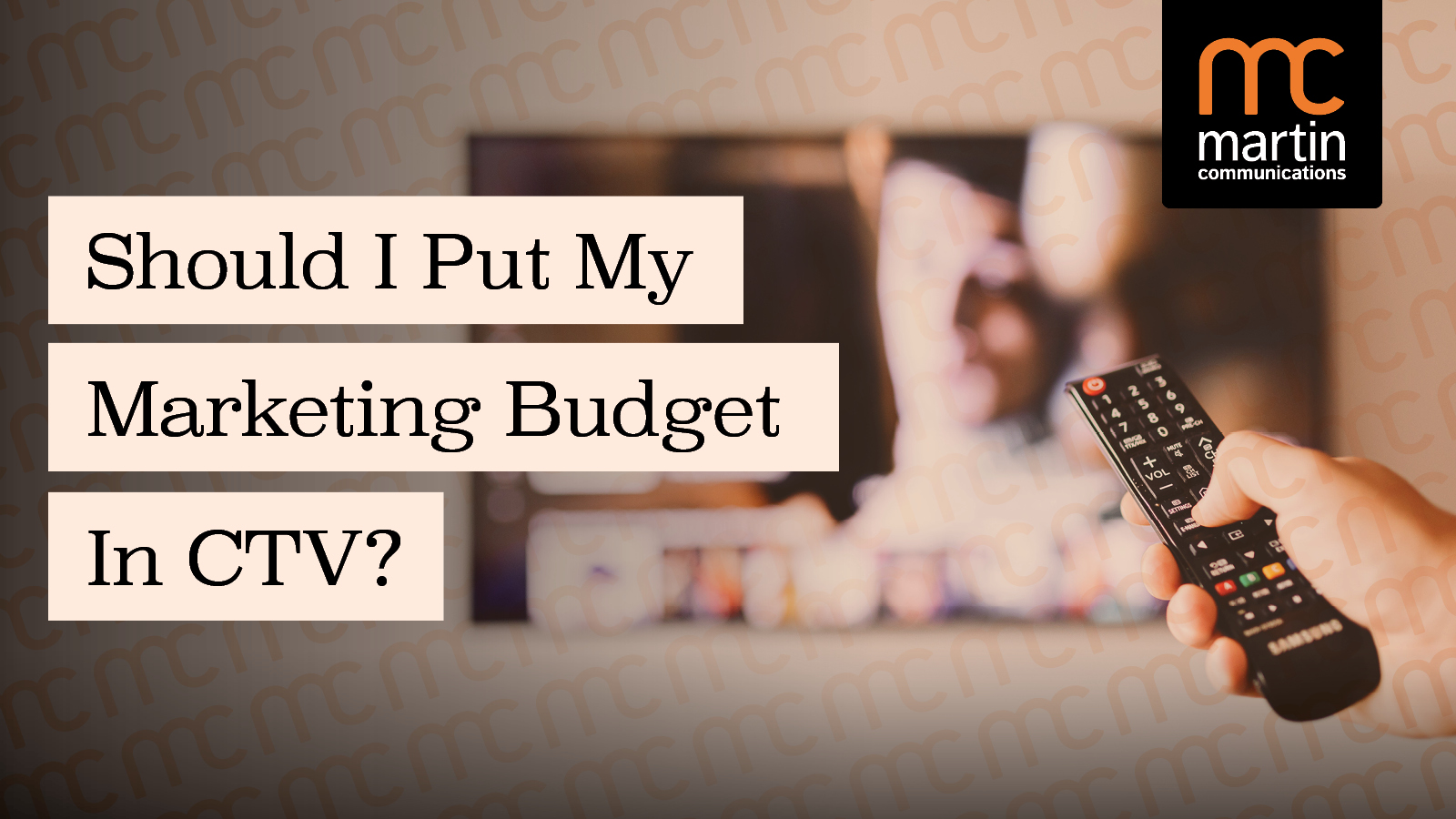
While we wouldn’t say TV is dead, we would say that the traditional structure that many of us are used to may become a thing of the past sooner than we were expecting. Study after study being released in 2022 and 2023 shows drastic and rapid changes in consumers’ media consumption patterns. (More on this below.)
Where Are We, and How Did We Get Here?
Consumers love choice! With the introduction of DVRs and on-demand cable content in the early 2000s, consumers got used to the idea of having what they wanted when they wanted it. At the same time, technology was advancing to allow companies to profile viewers and households. Put it all together, and we have a recipe for targeted video advertising based on location, interest, and even demographic or household details — just add content! And production studios have plenty of that available, originally through licensing deals, and now also through their own subscription services.
So here we are in 2023 with a plethora of streaming choices from premium-tier, ad-free subscription options and less-expensive ad-light versions of these same platforms to free services that always have ads.
If you’re a business-to-consumer(B2C) brand of any size — be it a nonprofit in need of volunteers, a healthcare provider seeking to reach new potential patients, or even a small remodeling firm — what should you be thinking about when it comes to streaming video?
First, Let’s Start with Some ABCs.
OTT, CTV, AVOD, Mid-Roll, VCR … the abbreviations used in media can be too much to keep up with sometimes. Let’s start at the very beginning.
OTT stands for Over-The-Top, a phrase that originated when people began adding internet service to their basic cable packages. OTT nowadays can generally be thought of as a catch-all term for any form of streaming video over the internet. This encompasses viewing on smartphones, computers and tablets, as well as television sets.
CTV means Connected TV, which is streaming content delivered via internet connected devices, such as Smart TVs and stick/box devices plugged in via USB or HDMI.
SVOD is subscription video on demand (think Netflix, Disney+, Hulu, etc.).
AVOD is advertising-supported video on demand, which is usually used to reference lower tiers of subscription services (the same services, but the less expensive versions, as well as options like YouTube or Amazon Prime).
FAST (free ad-supported TV) services are similar to SVOD and AVOD, but they are free, no subscription required (think of Tubi TV, Freevee, etc.).
Pre-roll and Mid-roll are terms for the placement of the video ad, typically when delivered via a website. “Pre-“ indicating before the main content like a movie preview at the cinema, and mid-roll meaning as an interruption video, like a normal ad break on TV.
No, VCR is not a reference to the 80s equipment. It stands for Video Completion Rate, which is a percentile measurement of how many users watched your video to its end. This mainly matters in digital video that isn’t shown through a television device, since those typically have very strong completion rates (the user doesn’t have an option to skip them).
For the rest of this article, we’re going to focus on AVOD and FAST categories of CTV in particular, as they have become the primary replacement for traditional, “linear” television with ads. (Linear referencing the way that programs are aired, in a line-up, by the way.)
Back to Our Initial Question: Should I Really Invest My Marketing Budget In CTV?
The short answer is: You should strongly consider it.
Streaming is where the largest audience share is. In August 2023, Nielsen reported that “streaming” set a record high of 38.7% share of TV usage the month prior (in July). And for the first time, traditional TV viewership in the U.S. dropped below 50%, with 20% viewing broadcast channels and 29.6% watching cable. These numbers have been trending in these directions for some time now and are projected to only become more disparate in the future with generational shifts.
Here are some of the PROs for utilizing streaming video ads:
1. This is a great option for those with smaller budgets or that have historically been unable to tap into traditional TV as an option because a broadcast DMA might be too large or cable zones may not quite line up with your service area, and purchasing multiple of these may be inefficient or out of the budget. Streaming video can be targeted by ZIP code making it highly focused and efficient.
2. Instead of the age-old TV conundrum of selecting what programming to purchase (especially if your budget is limited), buying streaming is like buying all of them in a way — you’re on whatever programming your target audience is choosing to watch.
3. Digital video platforms have targeting capabilities well beyond what linear television providers have to offer. While traditional TV has index data on who the largest viewing audiences are for certain shows and channels, your campaign is most likely going to be wasted on some who are not your target audience(s). Addressable video on demand is not a perfect science yet, and you can only target as narrowly as a household with a target individual than an exact person’s device while they are watching, but it may still be less overreach.
With that, you’re able to better customize the content. Are you looking to target just parents of school-age children, or maybe you prefer empty-nesters with high household income? Easily targeted with streaming video. Or perhaps you have multiple audiences? No problem. Each can get a version of creative that speaks to them.
4. Acceptance of ads in streaming is increasing — 90% of streamers are using at least one form of AVOD. One in four of SVODs are at lower ad-supported tiers that have been recently introduced by platforms, and one in three streamers are using FAST services. (sources: https://www.samba.tv/press-releases/samba-tvs-state-of-viewership-report-finds-growth-of-streaming-choices-for-consumers-usher-in-innovative-new-opportunities-for-advertisers)
44% of respondents in a recent survey of U.S. adults ages 18-70 said they “enjoyed” or “loved” ads in video streaming platforms, as opposed to 40% on social media platforms and 35% on audio streaming platforms.
(Source: https://www.insiderintelligence.com/content/six-10-streaming-viewers-will-watch-ads-save-few-bucks)
5. Streaming video doesn’t have to be in lieu of, in fact it can be a complimentary tactic to linear TV. Advertisers can even run a test to analyze the effectiveness of each vehicle for your goals and target audience(s) to find the right mix between the two.
There are also a few CONs to consider:
1. The main thing is costs. If you’re not already producing video content, there will be an additional investment to do so. Multiple creatives are strongly recommended to avoid ad fatigue in longer-term campaigns, or to connect with different audiences as mentioned above.
2. If you’re used to digital display or social media pricing, there will be some sticker shock. CTV impressions will generally be at least four times more expensive than display banners.
3. Not all inventory is available to everyone — at least not yet. Netflix launched with access to just a few select ad partners and Amazon has some very large budget requirements that behoove national and coop advertisers. But Hulu has launched a beta program for advertisers with smaller budgets, and YouTube is easily accessible as well.
Final Words
As with any media campaigns in the digital realm, it is important to know what you are buying — always discuss brand safety guiderails, viewability, and inventory/delivery plans with your CTV video partner or agency.
And remember, true CTV is a branding vehicle only. You cannot expect immediate conversions on your website because these ads, while digital and not clickable to take a user straight to your website on the same device. Have your end goals in mind and be sure you have a plan to realistically measure the outcomes of the campaign.
